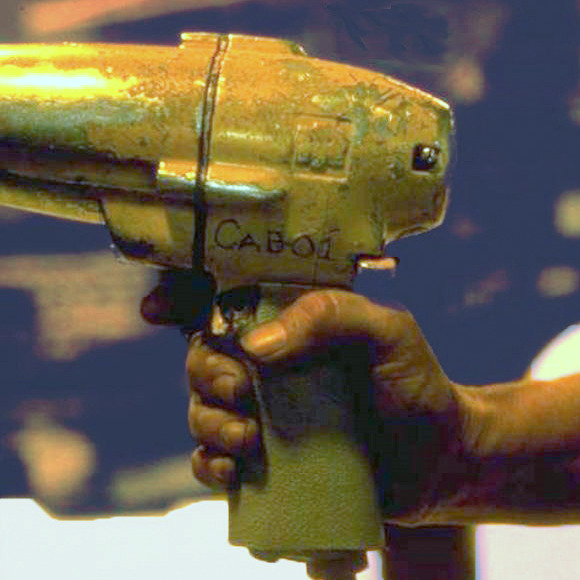 |
| Heavy and off balance |
Background
Many hand tools are heavy to hold for long periods. Reducing weight provides a good option, but there can be tradeoffs.
Furthermore, some tools are unnecessarily difficult to use because they are off balance, requiring more exertion to hold than otherwise.
Objectives
Minimize exertion on the arm and hand.
Issues and options
Weight: Pros and cons
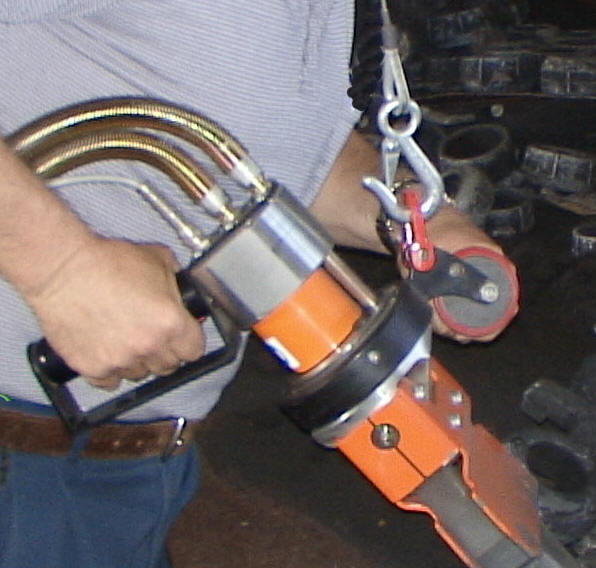 |
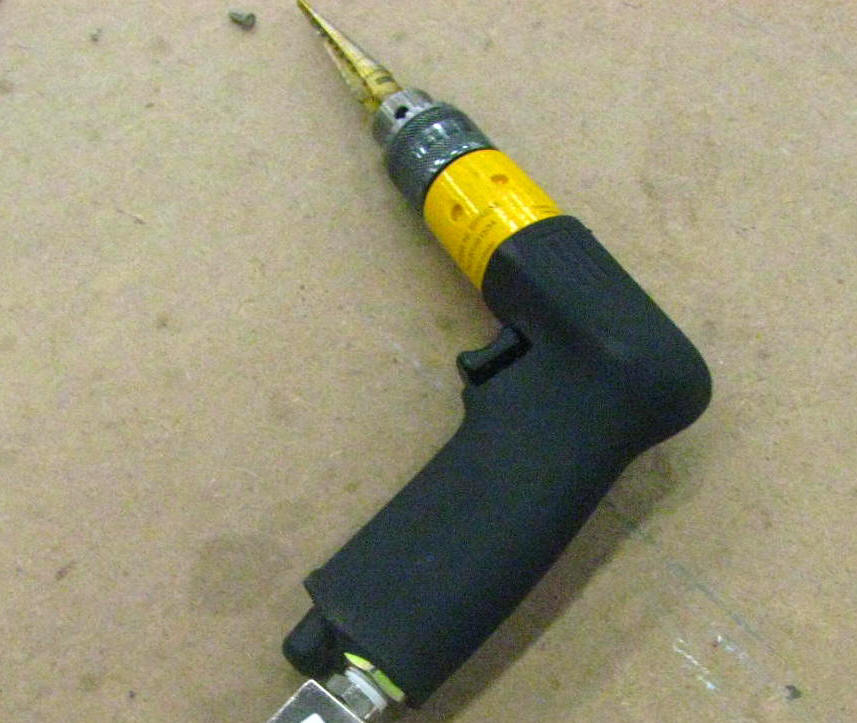 |
| Counterbalance | Redesign |
In the workplace, tool weight can be reduced by using counterbalances or by selecting lighter tools to take advantage of newer designs by tool companies.
However, making a tool lighter weight doesn’t necessarily make it better or more ergonomic. For example, if a heavier tool is more powerful, it can take less time to complete the job and potentially less time needed to hold the tool.
These issues are no different than many others. There are trade-offs and compromises that must be made.
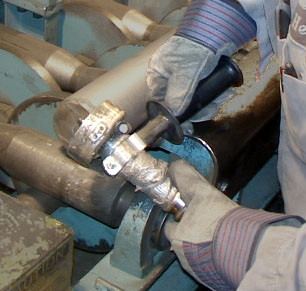 |
| Grinders: Heavier often better |
Furthermore, some tools perform better with heavier weight. For example, grinders usually need weight, thus making the tool lighter may require the employee to increase exertion.
Balance: Center of gravity
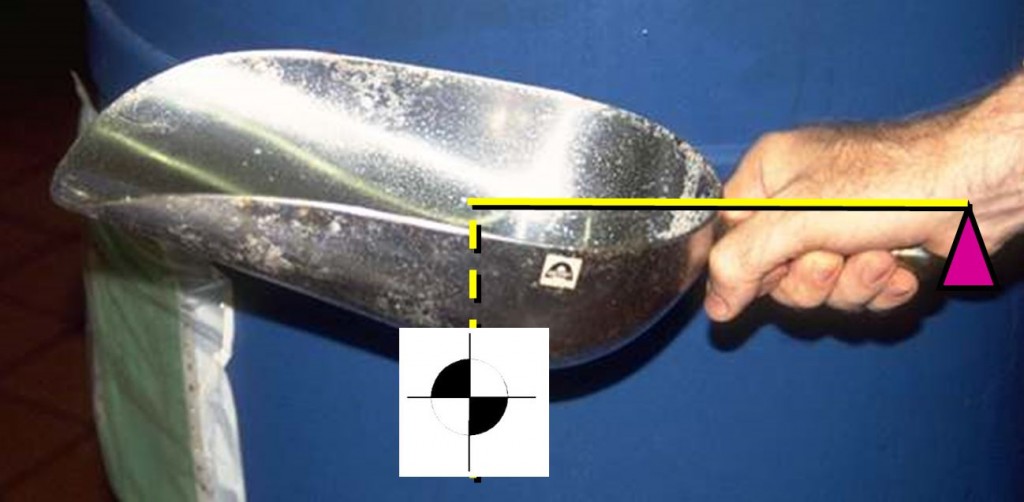 |
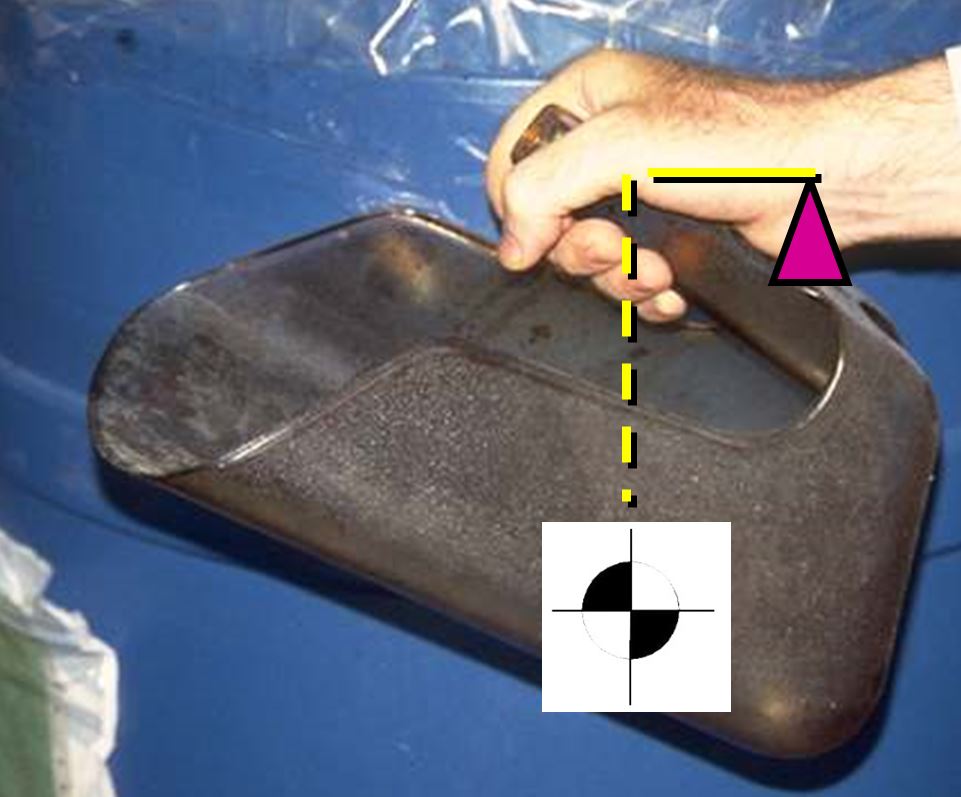 |
| Traditional | Unconventional |
In this context, balance is designing the tool so that the center of gravity is in the palm or under the wrist. The concept can be illustrated by contrasting the design of a traditional scoop with an unconventional design. The unconventional placement of the grip over the scoop moves the center of gravity much closer to the wrist.
Note: Some tools are so light that balance is not an issue. Conversely, some tools are so large and heavy that balance is the least of the concerns. But with some tools, good balance can be helpful.
Calculating the effect
In the scoop example, the weight of the tool has also been reduced by using plastic instead of steel. The combined effect lowers the strain on the wrist by 88%:
| Traditional | Unconventional | |
| Distance | 12 in. | 3 in. |
| Weight | 2 lbs. | 1 lb. |
| Load | 24 in. lbs. | 3 in. lbs. |
It is helpful to view the human body as a system of levers. In this case, the wrist is the fulcrm and the distance between the wrist and the center of gravity is the lever arm. Consequently, the load on the wrist (or the “moment” on the wrist) can easily be calculated to estimate differences in strain on the person.
Thus, in this example, the total load on the wrist is reduced 88%. The effect of each factor is also evident: Shortening the distance alone cuts the load by 25% and reducing the weight alone cuts the load 50%.
See Biomechanics.
